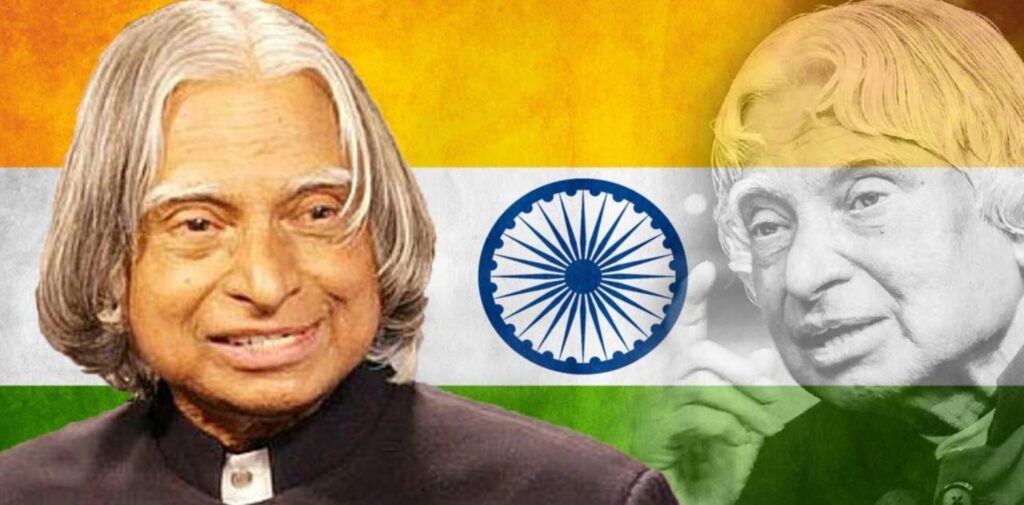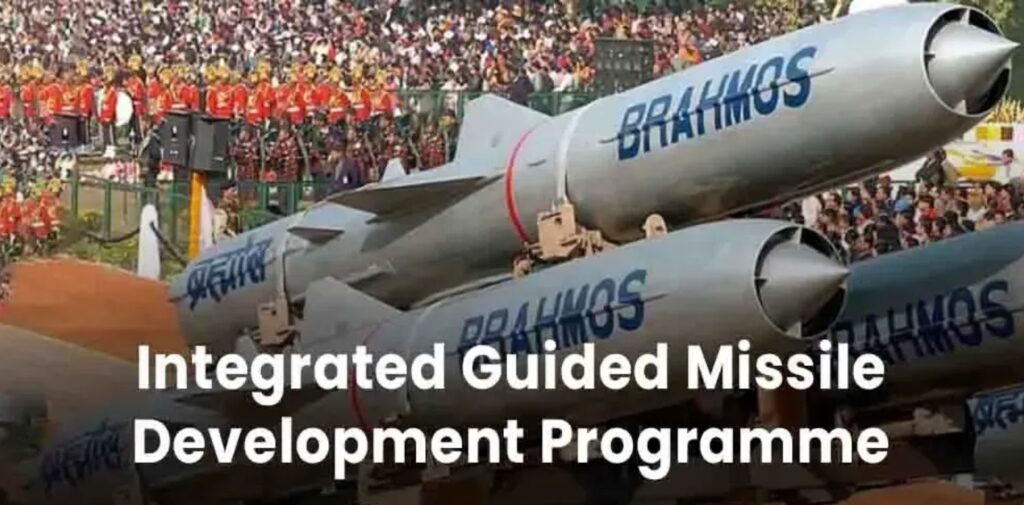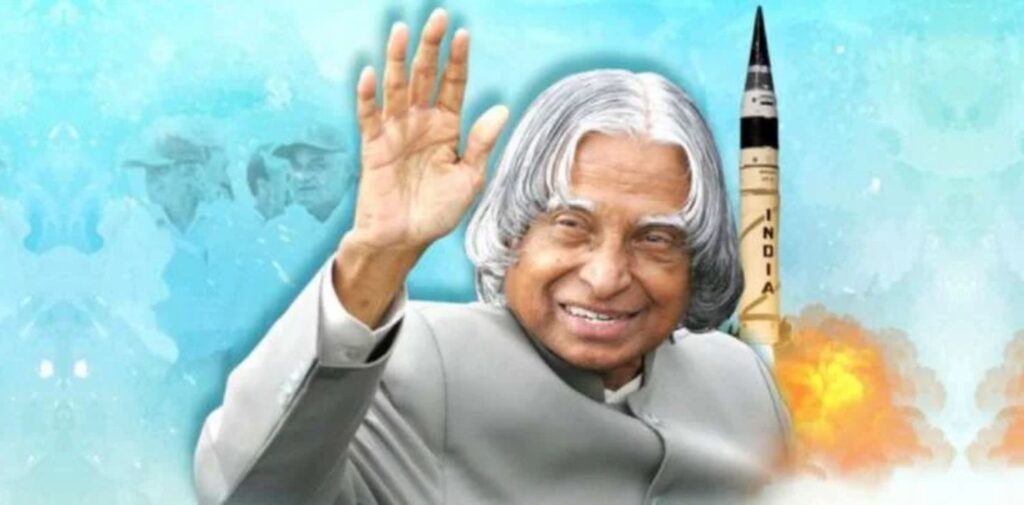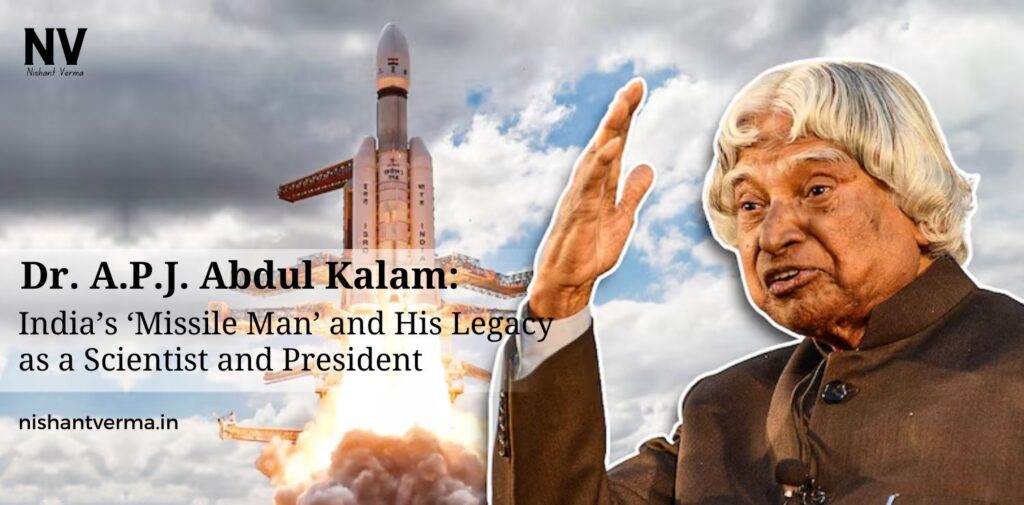Dr. A.P.J. Abdul Kalam, fondly remembered as the “Missile Man of India,” is one of the most respected figures in Indian history. A renowned scientist, visionary, and the 11th President of India, Dr. Kalam’s work in the field of space research and missile development transformed India into a significant player in the global scientific community. But his legacy goes beyond his remarkable achievements in science—he was a true people’s leader who inspired millions with his humility, vision, and dedication to serving the nation.
This article explores Dr. Kalam’s extraordinary contributions to India’s missile program, his role as a statesman, and the lasting impact of his work on future generations.
Early Life and Inspiration: Dr. A.P.J. Abdul Kalam
Dr. Avul Pakir Jainulabdeen Abdul Kalam was born on October 15, 1931, in a small town called Rameswaram in Tamil Nadu. Coming from a modest background, his family was not wealthy, but they valued education. Dr. Kalam’s father, a devout and kind man, was an important influence in his life. Despite financial challenges, his parents encouraged him to dream big and pursue knowledge.
From a young age, Kalam was fascinated with flight and science. He often spent time reading about aeroplanes and how they flew, which sparked his interest in aerospace engineering. He went on to study physics and aerospace engineering at the Madras Institute of Technology (MIT), and this set the stage for his future in scientific research and technological development.

Kalam’s Role in India’s Missile Program
Dr Kalam’s most notable contributions to India’s defence and technological sectors came through his involvement in the country’s missile program. As a scientist at the Indian Space Research Organisation (ISRO) and later at the Defence Research and Development Organisation (DRDO), Dr. Kalam played a pivotal role in developing indigenous missile systems for India.
The Development of the Integrated Guided Missile Development Program (IGMDP)
In the 1980s, India faced a growing need to develop its missile systems to strengthen its defence capabilities. At the time, India was largely dependent on foreign countries for military technology, and Dr. Kalam recognized that this dependence had to change. Under his leadership, the government launched the Integrated Guided Missile Development Program (IGMDP) in 1983.
Dr. Kalam, as the project director of the IGMDP, spearheaded the development of several important missiles. The program aimed to develop a series of missiles that could serve various purposes—from surface-to-surface missiles to anti-aircraft missiles. The key missiles developed under this program included:
- Prithvi: India’s first indigenously developed ballistic missile. The Prithvi missile was capable of carrying nuclear and conventional warheads, and it was designed to target enemy positions with precision.
- Agni: One of the most important achievements of the IGMDP, the Agni missile is a family of medium to intercontinental-range ballistic missiles. Agni’s development made India one of the few countries with the capability to launch missiles capable of carrying nuclear payloads over long distances.
- Akash: A surface-to-air missile, Akash was developed to protect India from air threats. It could target aircraft and missiles, making it an essential part of India’s defence strategy.
- Nag: An anti-tank guided missile, Nag was designed to be used against armoured enemy vehicles. It was another significant achievement in India’s effort to develop self-reliant defence systems.
These missiles were game-changers for India, allowing the country to assert itself as a regional power in terms of defence and technological advancements. Dr. Kalam’s work in this area earned him the title of “Missile Man” of India, as he was instrumental in turning India’s missile technology from basic research to fully operational systems.

Pokhran Nuclear Tests
Another key event that solidified Dr Kalam’s legacy as a defence scientist was his role in the successful Pokhran nuclear tests in 1998. These tests demonstrated India’s nuclear capabilities and were a major milestone in the country’s defence history. Dr Kalam, who was the Chief Scientific Adviser to the Prime Minister and the Secretary of the DRDO at the time, played a central role in overseeing the tests. The success of the nuclear tests placed India among the world’s nuclear powers and signalled to the world that India had developed the capacity to defend itself with nuclear weapons.
Kalam’s Role as President of India
Dr. Kalam’s reputation as a scientist and visionary led to his election as the 11th President of India in 2002. His tenure as President was marked by his humility, his ability to connect with people, and his deep commitment to the nation’s progress.
- People’s President: Dr. Kalam was affectionately called the “People’s President” because of his deep engagement with the citizens of India. Unlike many politicians, he made it a point to visit schools, universities, and public institutions, inspiring students and young people to dream big and work hard for their goals. His messages focused on the importance of education, innovation, and nation-building. His simplicity and openness made him widely loved and respected, even outside the political circles.
- Vision 2020: One of the major highlights of Dr. Kalam’s presidency was his Vision 2020. He passionately worked towards transforming India into a developed nation by the year 2020. His Vision 2020 focused on improving key areas such as education, healthcare, infrastructure, and technology. He believed that the youth of India could lead the country to greatness, and he made it his mission to empower them through knowledge and self-belief.
- Promoting Science and Technology: Dr. Kalam strongly advocated for the growth of science and technology in India. He pushed for advancements in space exploration, energy, and biotechnology. Under his leadership, India made strides in areas like satellite launches, space exploration, and renewable energy.

Legacy as a Scientist and Mentor
Dr. A.P.J. Abdul Kalam’s work as a scientist and mentor to young minds left an indelible mark on India’s technological landscape. His efforts to make India self-reliant in defence technology and space exploration set the stage for India’s future scientific achievements. He was known for his strong belief in the power of knowledge and innovation.
Even after his presidency, Dr. Kalam continued to inspire the youth through his books, speeches, and interactions. His book “Wings of Fire”, an autobiography, became a source of motivation for millions, especially young students. In it, Dr Kalam shared the story of his life—from his humble beginnings to his rise as a leading scientist and then as the President of India. His message was simple but powerful: with hard work, perseverance, and the right vision, anyone can achieve their dreams.
Kalam’s Lasting Impact
Dr. Kalam passed away on July 27, 2015, while delivering a lecture to students at the Indian Institute of Management (IIM) in Shillong. His sudden death left a void in the hearts of millions, but his legacy continues to live on in the form of his work, his teachings, and his vision for a developed India.
Dr. Kalam’s life and contributions have inspired generations of young Indians to pursue careers in science, technology, and public service. His focus on education, innovation, and self-reliance continues to shape the future of India, as the country strives to achieve the goals he envisioned for a prosperous and developed nation.
Conclusion: A True Nation Builder
Dr. A.P.J. Abdul Kalam, the “Missile Man of India,” was much more than a scientist or a president. He was a visionary who transformed India’s defence capabilities, pushed the boundaries of scientific achievement, and inspired millions with his humility and dedication. His work in India’s missile program, his leadership as the President, and his lifelong commitment to the nation’s progress have made him an icon in India and the world.
Dr. Kalam’s life teaches us the power of dreams, the importance of education, and the value of hard work. His legacy will continue to inspire future generations of Indians to aim high and make meaningful contributions to society, just as he did throughout his remarkable life.




